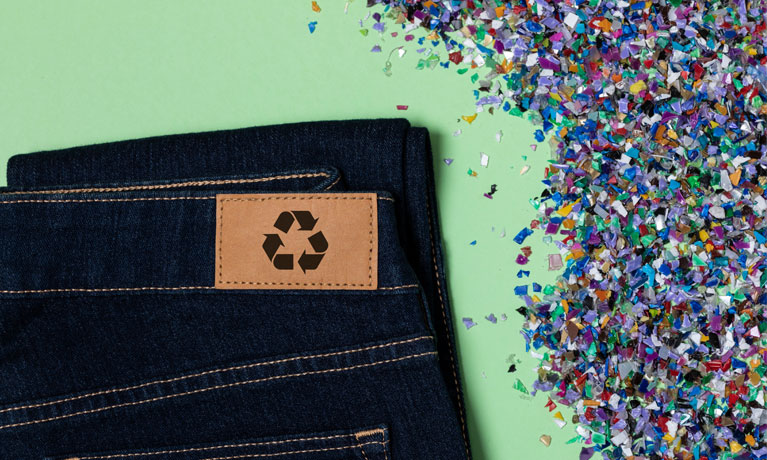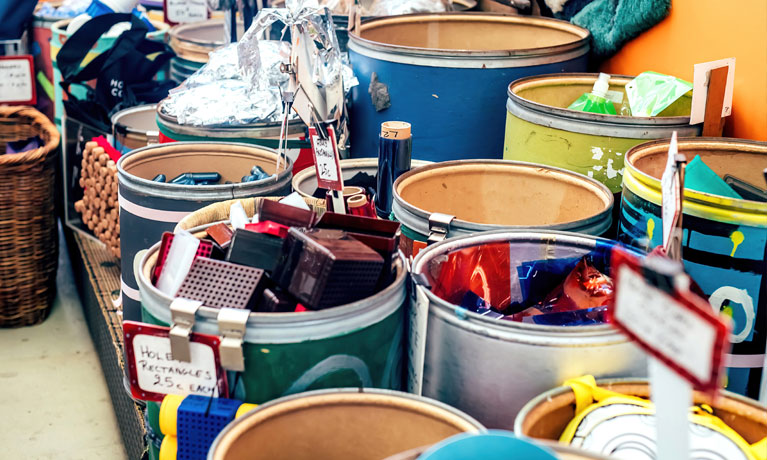By Dr. Jordon Lazell, Dr. Macarena Beltran & Dr. David Bek
Retailers are increasingly investing in new services and products that promote sustainability principles. Unfortunately, many of these efforts focus on improving the efficiency of the current linear supply chain rather than taking a systemic approach, such as improving rates of product recycling. However, some initiatives are emerging which will reduce overall resource-use through the integration of circular economy approaches.
Making fashion more circular
The first of these is in clothing fashion. Clothing production has virtually doubled in the last 15 years, with fast fashion trends driving a short use throwaway culture in the garment industry. Less than 1% of the material used to produce clothing is recycled into new clothing (Ellen MacArthur Foundation, 2017).
In response, Asda have announced that they will begin selling pre-worn, second-hand garments enabling consumers to purchase vintage, retro and pre-loved fashion pieces (Circular, 2021). Asda is launching this initiative in fifty stores and predicts thousands of tonnes of clothes will be prevented from going to waste. Sustainable fashion and the issue of waste is increasingly important to Asda customers with this initiative also providing fashion pieces at a more affordable price.

A key part of the circular economy is a shift in how the value of products is perceived by businesses. Asda’s foray into the second-hand clothing market shows that the value of products is being redrawn to include post-sale consumer use. Value is being recognised not only from how their product offerings correspond with sustainable and circular economy values, but also by taking responsibility for what happens to clothing products after they are sold.
Moss Bros are another clothing retailer who have recently changed their business model in line with more circular use of products. The Moss Box (2021), a menswear subscription service, allows consumers to rent two items of clothing for £65 a month. The company promote this as a more sustainable way of shopping as not only does this allow customers to try before they buy, but also consumers can keep up with changing fashion trends at a relatively low cost. Such circular retail models reduce waste by encouraging consumers to move away from disposable, fast fashion practices. Instead, clothing subscriptions embed value and importance into clothing pieces.
A ‘circular hub’ for furniture
The second area of retailing seeing an increasing move towards more circular business operations is in furniture. Ikea recently announced a ‘buy back and re-sale’ scheme (BBC, 2021). Customers returning items in good condition can receive a voucher for up to 50% of the original product price. A new ‘Circular Hub’ area within Ikea stores then displays and sells returned items. Ikea’s trials indicate that there is significant appetite for second-hand, reduced priced furniture from customers, increasing the accessibility and affordability of Ikea furniture products.
The furniture market, in particular, has huge potential for more circular activities. 10 million tonnes (Forrest, et al. 2017) of furniture is estimated to be discarded by businesses each year in the EU, primarily via disposal at landfill or incineration. Activities that promote the refurbishment, repair, and reuse of furniture are critical to reducing waste and allow consumers to take part in more circular means of buying and using products. Over the last year, trends in renovating, redecoration, and repair have boomed, directly connected to the increased demand for businesses to sell pre-own products.
Transitioning to more circular business practices
However, more can still be done to better embed circular businesses practices, such as radically improving materials, clothing design, collection, recycling, and re-manufacturing. More effective and efficient production processes are needed – lowering energy, waste and water usage as well as fossil-based materials (plastics). In the case of furniture, more effort could be made to promote eco-design standards to ensure items can be repaired and recycled. In the area of clothing fashion, businesses can do more to ensure that garments are circulated and worn for longer to maximise their value. Unprecedented levels of collaboration will be needed within supply chains to encourage re-selling and reuse of clothes and furniture as more durable design and manufacture will be required (Ellen MacArthur Foundation, 2021).
In summary, moving to more circular businesses models is a critical step in achieving a lower carbon and less wasteful economy. Such a transition is crucial to meeting emission reduction targets and circumventing a ‘produce-use-replace’ culture with one that prioritises reusing, repairing and recycling. The steps that some retailers are taking offers hope that the dial is starting to shift.
References
Ellen MacArthur Foundation (2017) A new textiles economy: Redesigning fashion’s future. Available at: https://www.ellenmacarthurfoundation.org/assets/downloads/A-New-Textiles-Economy_Full-Report_Updated_1-12-17.pdf
Circular (2021) Asda launches new second-hand vintage range. Available at: https://www.circularonline.co.uk/news/asda-launches-new-second-hand-vintage-range/
Moss Box (2021) https://www.mossboxunlimited.co.uk/
BBC (2021) Ikea starts buy-back scheme offering vouchers for old furniture. Available at: https://www.bbc.co.uk/news/business-56981636
Forrest, A. et al. (2017) Circular Economy Opportunities in the Furniture Sector. Available at: Circular Economy Opportunities in the Furniture Sector
Ellen MacArthur Foundation (2021) https://www.ellenmacarthurfoundation.org/our-work/activities/make-fashion-circular




Comments are disabled